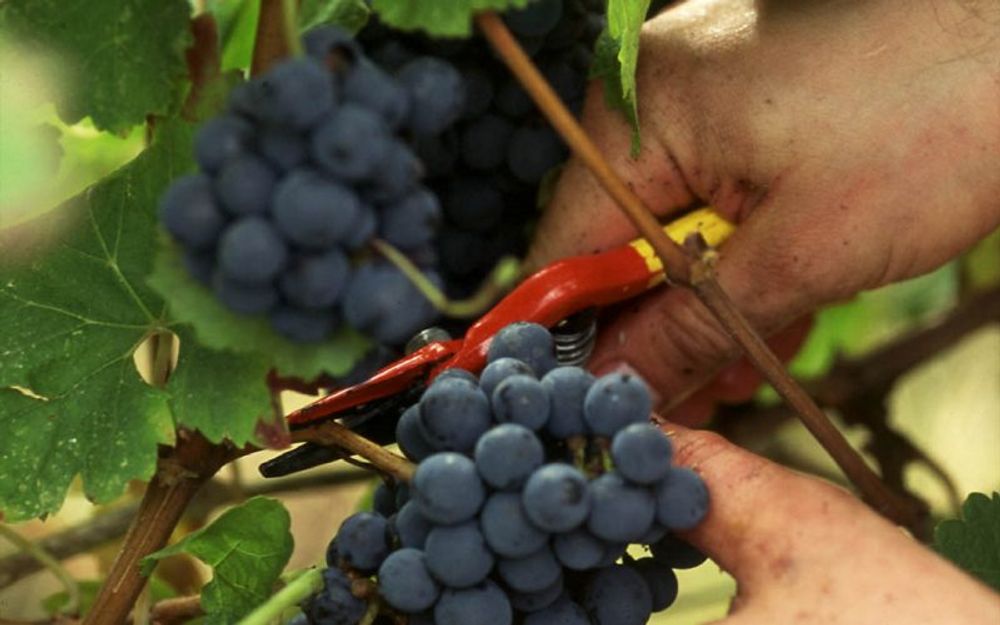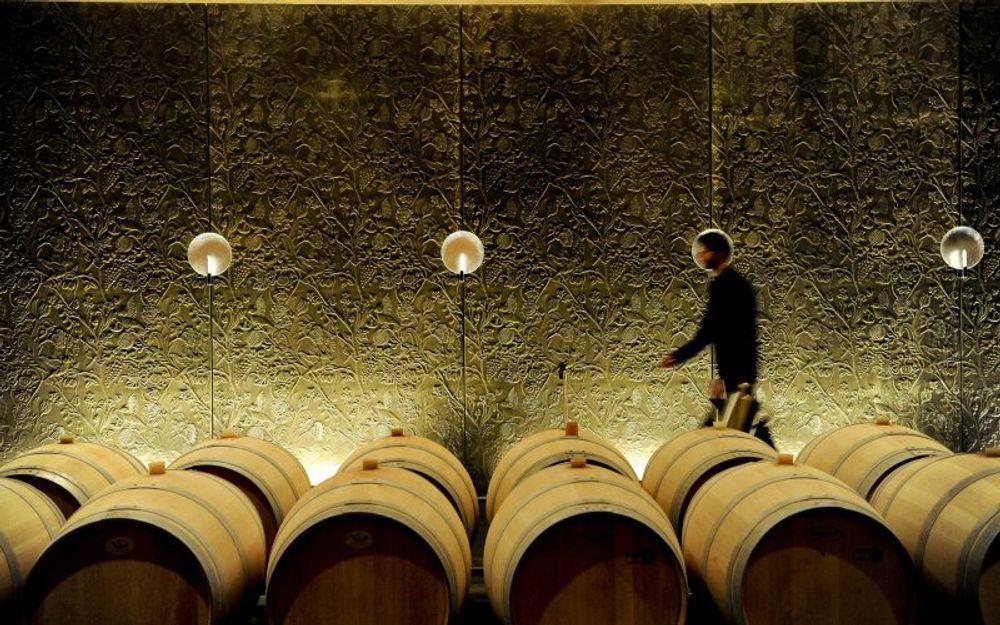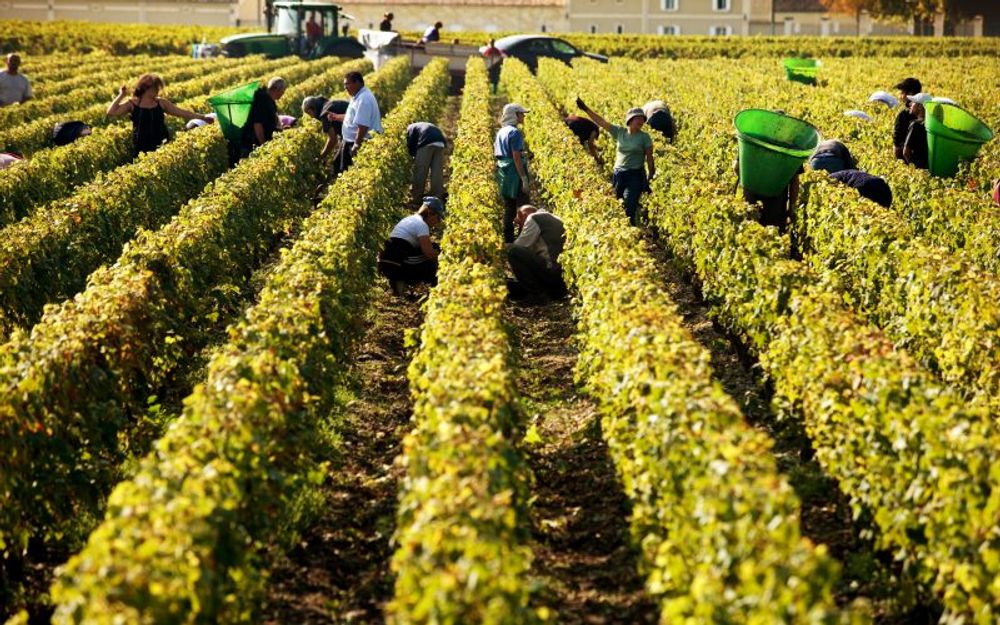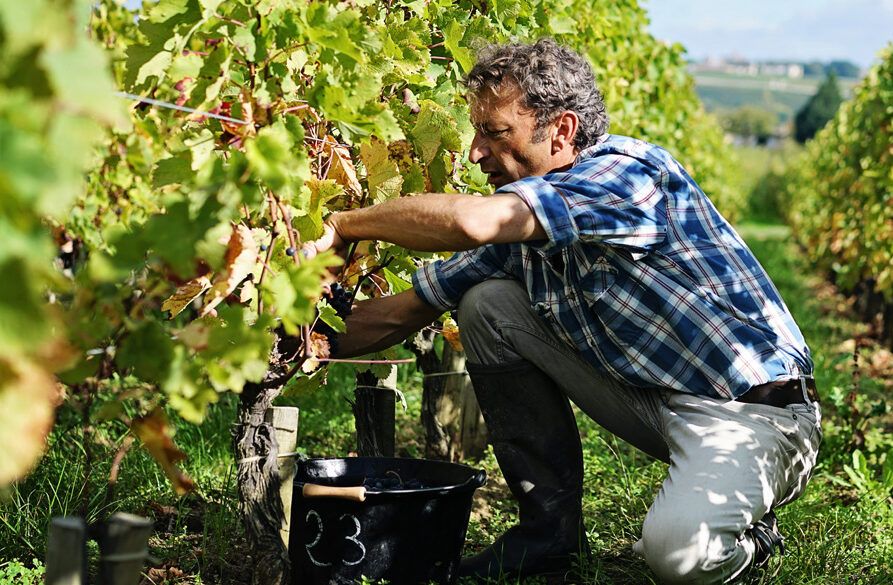The quality of wine is there, the difficulty will be getting your hands on it due to a poor 2021 harvest that will have a knock-on impact on the region. But Christophe Chateau of the Conseil interprofessionnel du vin de Bordeaux (CIVB) says its producers are well prepared to cope.

Christophe Chateau, communications director at the Conseil Interprofessionnel du Vin de Bordeaux (CIVB), says the 2021 Bordeaux vintage was one of the most challenging on record
What were the biggest challenges facing producers this year?
It was one of the most difficult vintages we have had in Bordeaux because of the climate. We had quite a warm winter, followed by a very cold April with some huge frosts at the start of the month with temperatures in regions including Sauterne and Grave as low as minus six, seven, which caused big damage [in the vineyards] with around 70 – 80% of vineyards affected. We then had a lot of rainfall in May and June, followed by mildew. Then after July it was quite dry – and in August we had 25% less water than usual.
So what is the 2021 vintage looking like?
Quality is going to be good, though it is really too early to say regarding the white wines. The cooler weather in August is very good for the Sauvignons in particular, while the red wine is going to be good, but not as good as 2019 and 2020. As for volume, the 2021 yield will definitely be smaller than 2020, though again it is too early to give definitive figures. However, we think that this year’s yield will be below 4m hectolitres, compared to 4.4mhl last year.
How are Bordeaux’s exports performing, and which markets are driving any growth?
In the past 16 months, we have seen our exports increase by 16% in volume, and 37% in value to €2.3bn, a record high. And it is two countries that are behind that growth – the US and China. The 25% tax [imposed on French wines under a certain abv by the Trump administration] has been a big deal for us, so when Biden announced that the tax was to be scrapped in June, sales have gone up by 32% in volume and 68% in value, and we are now selling the 18, 19 and 20 vintages for which we are seeing strong demand.

Petit Verdot grapes being picked in Bordeaux
To what extent has Bordeaux benefited from the effective closure of the Chinese market to Australian producers?
In China we have partly stepped into the gap created by Australia. We are not really happy with this situation and are sorry for our Australian friends, but Australia was a big competitor to Bordeaux amongst mid ranged wines, while Chile was the rival for cheaper wines. Of course this has opened doors for Bordeaux in China, where we have seen sales up by 28% in volume and in value.
What about the UK market? How well is that performing?
The UK has not fared so well in the past 12 months, with volumes down by 9%, though value is up by 47%. The reason for the decreased volume is because of the stockpiling that took place before Brexit, when the UK was buying more wine in advance to ensure they were able to secure both the volume and price. However, the UK has now overtaken the US to become the biggest export market for white Bordeaux, with shipments jumping from 25,930hl in September 23019 to 28,917hl in September 2021.
Shipments to the US dropped during the same period, down from 30,317hl to 26,949hl. Of the top 25 markets for Bordeaux, only three are actually increasing, and these are the UK, Singapore and Lithuania. But buyers need to buy again, and put product in shops and restaurants now that they are reopening after the pandemic-related closures – they need to re-stock.
What impact has the annual Bordeaux Wine Month had?
We do get some figures back from participating wine merchants, and we know that 91% report increased sales, and over a third of those are of white wine As part of the promotion we encourage merchants to have at least one white Bordeaux in front of consumers as many are surprised to find out that Bordeaux makes white wines – they tend to associate the region with red wines, so the promotion has tangible results.

Chateau Soutard in Saint-Émilion grows mainly Merlot and Cabernet Franc grapes in its 30 hectare vineyard
Presumably Bordeaux wine needs no introduction, but do you think that more education is required amongst UK consumers?
Yes, while the Bordeaux name is very well known around the world, and there is high awareness of the region, it’s more difficult to get people to know that we don’t only produce red wines but also white, sparkling and rosé. And we also want to reach the younger generation who probably haven’t been brought up with Bordeaux wines. We want to show them that the wines are accessible, affordable and easy drinking, which they can drink during casual occasions. We have done a lot of work to appeal to the younger demographic, including a pop-up bar at the Taste festival, and at Tobacco Dock in London where we served up sparkling dry white wine along with food and music.
What is the outlook on price?
We really don’t know exactly what’s going to happen in the coming months, but prices are definitely going to increase. We will have enough wine to export, but the problem, if there is one, will be for white wine – we don’t have enough white wine for next year, so prices are going to increase for sure. All the materials we are using are increasing, and that will have an effect on prices as well as the costs of logistics and shipping.
How is demand for premium wines faring?
In the past 12 months we have seen high demand for premium wines, despite the difficulties in the economy. Luxury products by producers such as Louis Vuitton and quality wines are still doing well. Some people have made a lot of money from the [Covid] crisis.

The Bordeaux harvest in full swing
What about the ongoing conversion to organic production?
The change is incredible. In the 1970’s when I was growing up we never had seat belts in the car and our parents used to smoke, and it used to be like that in the vineyards as well. People used dangerous chemicals without any protection and without knowing the danger and there were no safety measures but we didn’t know any better at the time.
At the end of the 1990’s we saw big changes, with a large decrease in the use of harmful products, and now at least 50% of the products used in our vineyards are organic. The total vineyard area now dedicated to organic production increased by 43% last year to reach nearly 20,000 hectares, with 72 properties or around 1,400 hectares certified as biodynamic and over 75% of the vineyard area now has a certified environmental approach.
What are the biggest challenges facing producers switching to organic means of production?
The biggest problem is dealing with mildew, which is a risk when you have high temperatures and lots of rain. Without traditional fungicides, it can be difficult to treat. The reason the Languedoc was the first French region to switch to organic production on a large commercial scale was because they enjoy a relatively dry climate – certainly drier than in Bordeaux, so making the switch was easier for them. Also, it provided an opportunity for winemakers in the region to stand out at a time when the region wasn’t the huge exporter it is today, and it became their point of difference. Becoming organic was a way for them to find new markets and to sell their wine.
Bordeaux production, 2010 – 2021
(In hectolitres)
2010: 5.707m
2011: 5.461m
2012: 5.245m
2013: 3.838m
2014: 5.274m
2015: 5.296m
2016: 5.772m
2017: 3.499m
2018: 4.986m
2019: 4.863m
2020: 4.404m
2021: Forecast to be below 4m
Ten year average: 4.940m
Source: CIVB
































